Tead4 and Tfap2c generate bipotency and a bistable switch in totipotent embryos to promote robust lineage diversification
- PMID: 38789684
- PMCID: PMC11189297
- DOI: 10.1038/s41594-024-01311-9
Tead4 and Tfap2c generate bipotency and a bistable switch in totipotent embryos to promote robust lineage diversification
Abstract
The mouse and human embryo gradually loses totipotency before diversifying into the inner cell mass (ICM, future organism) and trophectoderm (TE, future placenta). The transcription factors TFAP2C and TEAD4 with activated RHOA accelerate embryo polarization. Here we show that these factors also accelerate the loss of totipotency. TFAP2C and TEAD4 paradoxically promote and inhibit Hippo signaling before lineage diversification: they drive expression of multiple Hippo regulators while also promoting apical domain formation, which inactivates Hippo. Each factor activates TE specifiers in bipotent cells, while TFAP2C also activates specifiers of the ICM fate. Asymmetric segregation of the apical domain reconciles the opposing regulation of Hippo signaling into Hippo OFF and the TE fate, or Hippo ON and the ICM fate. We propose that the bistable switch established by TFAP2C and TEAD4 is exploited to trigger robust lineage diversification in the developing embryo.
© 2024. This is a U.S. Government work and not under copyright protection in the US; foreign copyright protection may apply.
Conflict of interest statement
The authors declare no competing interests.
Figures

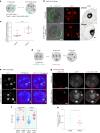
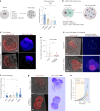
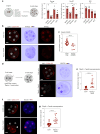
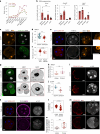
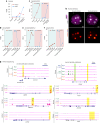
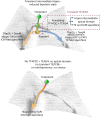
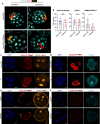

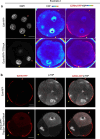

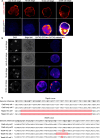
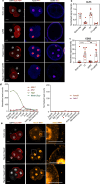

Similar articles
-
Lineage regulators TFAP2C and NR5A2 function as bipotency activators in totipotent embryos.Nat Struct Mol Biol. 2024 Jun;31(6):950-963. doi: 10.1038/s41594-023-01199-x. Epub 2024 Jan 19. Nat Struct Mol Biol. 2024. PMID: 38243114
-
Transcription factor AP-2γ induces early Cdx2 expression and represses HIPPO signaling to specify the trophectoderm lineage.Development. 2015 May 1;142(9):1606-15. doi: 10.1242/dev.120238. Epub 2015 Apr 9. Development. 2015. PMID: 25858457 Free PMC article.
-
TEAD4 regulates trophectoderm differentiation upstream of CDX2 in a GATA3-independent manner in the human preimplantation embryo.Hum Reprod. 2022 Jul 30;37(8):1760-1773. doi: 10.1093/humrep/deac138. Hum Reprod. 2022. PMID: 35700449
-
A tale of two cell-fates: role of the Hippo signaling pathway and transcription factors in early lineage formation in mouse preimplantation embryos.Mol Hum Reprod. 2020 Sep 1;26(9):653-664. doi: 10.1093/molehr/gaaa052. Mol Hum Reprod. 2020. PMID: 32647873 Free PMC article. Review.
-
A Comparative Analysis of Hippo Signaling Pathway Components during Murine and Bovine Early Mammalian Embryogenesis.Genes (Basel). 2021 Feb 16;12(2):281. doi: 10.3390/genes12020281. Genes (Basel). 2021. PMID: 33669396 Free PMC article. Review.
Cited by
-
TFAP2C is a key regulator of intrauterine trophoblast cell invasion and deep hemochorial placentation.JCI Insight. 2024 Dec 3;10(2):e186471. doi: 10.1172/jci.insight.186471. JCI Insight. 2024. PMID: 39625795 Free PMC article.
-
FOXM1 expression reverts aging chromatin profiles through repression of the senescence-associated pioneer factor AP-1.Nat Commun. 2025 Mar 25;16(1):2931. doi: 10.1038/s41467-025-57503-4. Nat Commun. 2025. PMID: 40133272 Free PMC article.
-
Regulation of autophagy and its role in late preimplantation during mouse embryo development.Sci Rep. 2025 Jul 18;15(1):26163. doi: 10.1038/s41598-025-11359-2. Sci Rep. 2025. PMID: 40681589 Free PMC article.
-
Deciphering the role of cis-regulatory elements and TFAP2C in the activation of zygotic Sox2 expression in mouse preimplantation embryos.Development. 2025 Jul 15;152(14):dev204626. doi: 10.1242/dev.204626. Epub 2025 Jul 18. Development. 2025. PMID: 40600821 Free PMC article.
-
The explosive discovery of TNT in early mouse embryos.Nat Struct Mol Biol. 2024 Jun;31(6):852-855. doi: 10.1038/s41594-024-01304-8. Nat Struct Mol Biol. 2024. PMID: 38789683 No abstract available.
References
MeSH terms
Substances
Grants and funding
LinkOut - more resources
Full Text Sources
Medical
Molecular Biology Databases
Miscellaneous

